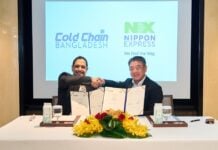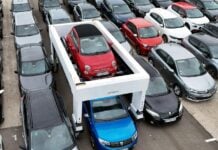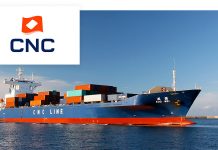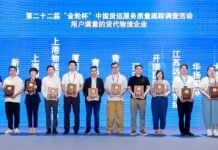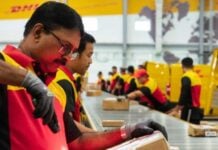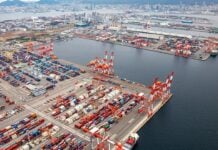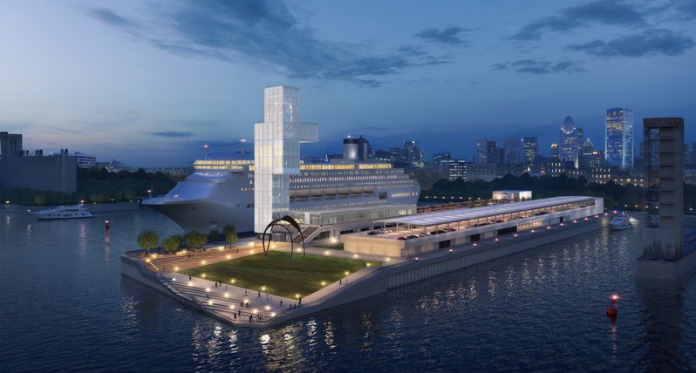
Ports of Montreal, Singapore, Huelva, Northwest Seaport Alliance, Yeoso Gwangyang and Vigo to contest WPSP Awards for Community Outreach & Port-City Dialogue
Local communities grant and renew ports’ licenses to operate. In return, sustainable ports need to effectively address the social and environmental impact of port operations. They strive to improve by involving all port community stakeholders in sustainable port development projects, from beginning to end. Port community actors can engage positively with their urban stakeholders by offering them innovative, mutually beneficial solutions to make their cities more attractive and resilient.
With so many projects submitted from around the world, the Award has been split into two categories.
Focus area 1 – Port Development and “license to operate”

Port of Montreal – Grand Quay Development
The Grand Quay of the Port of Montreal is a new urban space developed by the Montreal Port Authority (MPA). Located between the river and the city in the heart of Old Montreal, it features a contemporary cruise terminal equipped with electric shore power technology, new green spaces open to the public and a Port Centre.
The Grand Quay project demonstrates the MPA’s desire to get closer to the community, offer the public better access to the river and better integrate into its surroundings and environment. It reduces the port’s environmental footprint, meets the operational needs of cruise lines and their guests, and contributes to the economic prosperity of Greater Montreal, Quebec and Canada.
The Grand Quay revitalizes a century-old site into a modern cruise terminal whose innovative architectural design ensures a quality welcome for cruise ships and their guests. It reduces the port’s environmental footprint through the installation of shore power. It is the first green initiative of its kind in Quebec. The creation of green spaces, which including a green roof, is original in design. The Port Centre opens a cultural window on the maritime industry and enhances the public’s perception of the port.
Prior to developing the project, the MPA held numerous meetings with key partners from the economic and tourism sectors, political and social stakeholders. It also held open forums to present the project to residents, gather their input and answer their questions.

Maritime and Port Authority of Singapore – Singapore’s Next Generation Tuas Port Project
Tuas Port, when fully developed in four phases, will be the world’s single largest container port. It will be capable of handling up to 65 million TEUs annually. From planning to implementation, Tuas Port will be a resilient port. It provides a single consolidated location for Singapore’s container activities, significantly reducing inter-terminal haulage operations and GHG emissions.
To adapt to rising sea levels, Tuas Port will have an operational platform of 5m above mean sea level (MSL). More than 50% of the total fill for Phases 1 and 2 are dredged material and excavated earth from construction projects. Reusing this material reduces reliance on sand for reclamation and saves more than S$2 billion in fill material costs.
In order to protect marine habitats and sensitive commercial water intakes, environmental impact assessments were conducted. Strict Environmental Quality objectives were applied during the reclamation works. A S$6 million program relocated impacted corals along with nature volunteers and non-governmental organizations. The relocated corals’ survival rate was 80%.

Port of Huelva – Ecological Recovery Project
Located on an estuary of high ecological value, the Port of Huelva is obliged to balance economic with social interests. This involved the conservation of more than 245.000 hectares of protected areas (Biosphere Reserve, Natura 2000 Network, Natural Site, among others)
Through concerted efforts for over 10 years and a total investment of EUR 27 million, the ecological recovery project has addressed the environmental recovery of the degraded left bank of the Odiel estuary and re-established the conservation of habitats. The environmental work was complemented with the construction of a boulevard along one kilometer of the Odiel estuary, and a four-kilometer pedestrian path. This has provided citizens with a recreational area of high environmental and social value.
Some of the significant habitat gains made by the project include:
- The recovery of ecological functions in marshes and the native species, Spartina Maritima.
- Creating a carbon sink that captures more than 300 tons of carbon annually.
- The stabilization of marshes eroded by sea-level changes.
- Conserving protected species such as Pandion Haliaetus, Platalea Leucorodia, and Lutra Lutra.
- Eradicating invasive species such as Spartina Densiflora.
Focus area 2 – Addressing externalities and the impact of port operations

Northwest Seaports Alliance – Clean Truck Program
Under the Northwest Ports Clean Air Strategy, the ports of Seattle, Tacoma, Vancouver, British Columbia, and the Northwest Seaport Alliance collectively set a goal of having 2007 or newer engine year trucks exclusively serving container terminals.
As of Jan. 1, 2019, all trucks serving the international container terminals have been equipped with an active RFID tag and need to have a 2007 (or newer) engine, or a certified equivalent emission control system. The RFID must be updated with current driver information, VIN, company name, SCAC and license plate information.
The NWSA has implemented a large-scale effort to improve outreach and education on trucking issues in the gateway, including:
- Hosting workshops on a range of topics such as diesel particulate filter (DPF) maintenance, safety & financing, translation and support
- Port staff sought cost-effective ways for drivers to update their trucks and presented findings at the Trucker’s Outreach Forum
- The Program also provides support to the Puget Sound Clean Air Agency’s online DPF maintenance training videos, available in seven languages
- Hosting Trucker Appreciation BBQs to share maintenance information
NWSA has collaborated with a range of state agencies (Puget Sound Clean Air Agency; EPA; WA Department of Ecology; African Chamber of Commerce of the Pacific Northwest; City of Seattle; Washington Trucking Association) and the Pacific Northwest trucking community. So far, the program has decreased diesel particulate matter (DPM) emissions from trucks by 33.4 tons of DPM per year.

Yeosu Gwangyang Port – Community Outreach Program
Yeosu Gwangyang Port Authority (YGPA) manages a total area of 110 km2 with 103 berths. The YGPA Port Community Outreach Program aims at bringing the port closer to its local community and is based on four pillars:
- Community Outreach Program: each year, YGPA takes up a series of community outreach initiatives. The Ocean Natural purification volunteer service, senior lunch box delivery service, the house repair-volunteer service, and a talent donation to children in the local area. YGPA staff contribute 22 hours annually each to community outreach activities, resulting in a total of 3,000 hours dedicated by YGPA employees so far.
- Sunflower Garden Project: YGPA re-structured the Port area aiming at making better use of space to attract recreational activities and to support the local economy. As part of this effort, YGPA planted sunflowers in a 53,000m2 area in the idle space of Gwangyang Distripark resulting in a 13.5% increase in tourists visiting the area.
- Yeosu Project and Academy provides education and training on ocean affairs to graduate students from developing countries with a two-week course on ocean affairs.
- Through its Port-City dialogue program, YGPA brings together local authorities (city, province, relevant Ministries) and the local chamber of commerce to agree on common policies and joint initiatives addressing the sustainability of the port.

Port of Vigo – Sunset Dock Project
Located on the bay “Ria de Vigo” on the Northwest coast of Spain, Port of Vigo is a natural port sheltered from the ocean, surrounded by the National Park “Illas Atlánticas” and other natural protected areas. This location is an important zone for artesian fishing and aquaculture.
By implementing its Blue Growth strategy, the Port of Vigo brings together port community stakeholders by establishing the “green” objective of an integral program of environmental actions.
In this context, the “Sunset Dock” project was created to develop innovative practices that practically achieve sustainability objectives by:
- Restoration and development of marine ecosystems in the port area
- Promoting awareness of ecosystem conservation in the port area
- Reducing carbon emissions through CO2 capture techniques
A study is underway to create a marine natural ecosystem in the port waters to protect and increase biodiversity in the port.
The design and installation of structures for colonization by species of fauna and flora are on-going and the first successful outcomes are already evident.
Sunset Dock also aims to achieve synergies by having local companies, research institutions, and technological centers shared knowledge and technology.
The Sunset Dock monitoring and dissemination plan aims at offering to the local community a live experience where the audience can follow up on the process of marine habitats colonization and restoration.
อัพเดตข่าวสารและบทความที่น่าสนใจในอุตสาหกรรมโลจิสติกส์ก่อนใคร ผ่าน Line Official Account @Logistics Mananger เพียงเพิ่มเราเป็นเพื่อน @Logistics Manager หรือคลิกที่นี่



